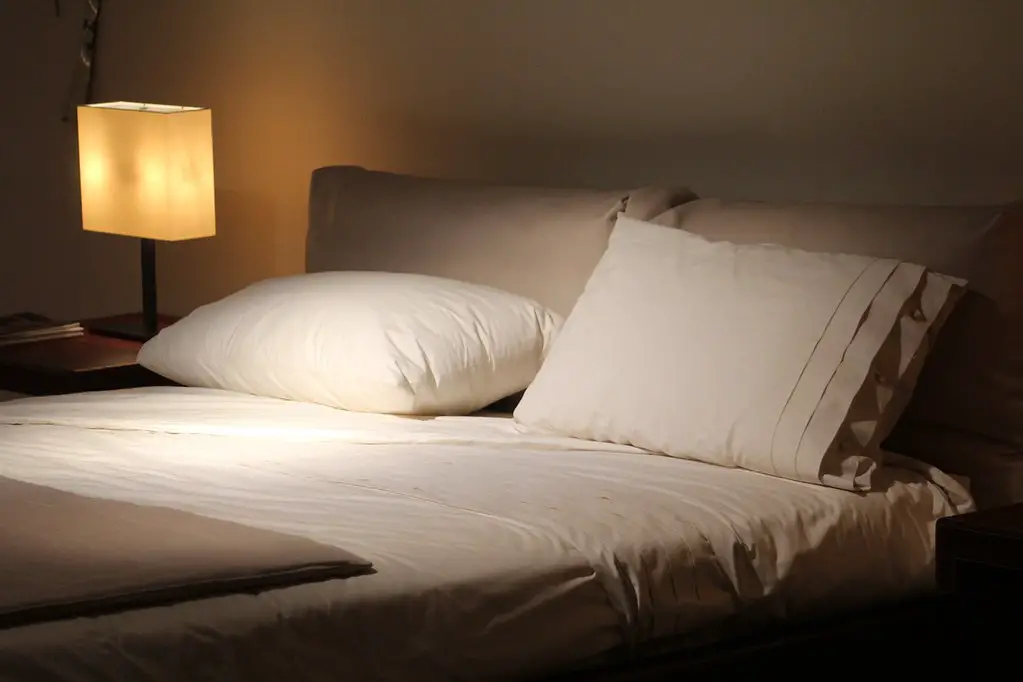Nothing beats the coziness of curling up under a plush comforter on a chilly night. But after months of use, your favorite comforter can start to look dingy and feel less fresh. Knowing the proper techniques for washing comforters ensures they stay hygienic, fluffy and fabulous.
This guide covers everything you need to know about cleaning comforters at home or professionally. We’ll explain signs it’s time to wash, compare washing methods and products, and provide tips to dry, store and extend the lifespan of your comforter. Follow these best practices so you can keep enjoying the warmth and style of a fresh, clean comforter.
Table of Contents
ToggleWhen to Wash Your Comforter
In general, aim to wash your comforter every 2-3 months with regular use. Wash more frequently if:
- You notice staining, spots or soiling
- Your comforter has absorbed odors
- Your comforter feels heavier or dingier
- Someone with allergies uses the comforter
- Pets sleep on the bed
For guest and seasonal comforters used infrequently, once or twice a year is sufficient. Inspect comforters used by children and teens more often for needed washing.
Preparing to Wash Your Comforter
Follow these steps before throwing your comforter in the wash:
Check the Care Label
Refer to the sewn-in manufacturer’s care label for instructions on proper washing methods, water temperature, and drying guidance.
Wash Large Comforters Separately
Wash King or oversized comforters by themselves to leave room for agitation and avoid tangling or cramming.
Pretreat Stained Areas
Rub a stain remover bar or liquid detergent into stained areas to help lift spots and soil before washing.
Mend Rips or Tears
Sew up any small tears or holes in the fabric to prevent further damage during the agitation of washing.
Zip Up Protective Cover
For delicate comforters, place inside a zippered waterproof comforter bag before washing to prevent damage.
Preparation ensures you safely clean comforters without shrinking or damage.
How to Wash a Comforter
You have several good options for washing comforters safely and hygienically:
Washing Machine Method
The easiest and most convenient option is washing comforters at home in your washing machine.
Pros
- Convenient and accessible for home use
- Immerses comforter fully in water for thorough cleaning
- Less expensive than dry cleaning
Cons
- Large capacity machines needed for King/oversized comforters
- Agitation can damagedelicate fabrics if not gentle cycle
- Must be dried thoroughly to prevent mold
Tips for Success
- Use a mild detergent without excessive chemicals or fragrances
- Choose the gentle or delicate cycle to reduce agitation
- Wash with 2-3 extra rinse cycles to remove all detergent residue
- Dry thoroughly on low heat until fully crisp and dry
With the right settings, home washing ensures a freshly laundered comforter.
Dry Cleaners Method
Taking your comforter to professional dry cleaners simplifies the process.
Pros
- Convenient drop-off service
- Reduced handling of bulky comforter at home
- Professional methods gentler on fabrics
- No need to dry comforter fully at home
Cons
- More expensive than home washing
- Chemical solvents used in dry cleaning can be harsh
- Turnaround time for getting comforter back
Tips for Success
- Ask to pre-inspect comforter for any needed stain treatment
- Request non-toxic, environmentally safe solvents
- For down, specify no wet-cleaning methods only
- Air out comforter at home before use to dissipate chemical smells
Professional dry cleaning effectively deep cleans comforters with less hassle.
Professional Laundry Service
For an eco-friendly approach, professional laundry services offer full-service comforter washing and drying.
Pros
- Uses gentler laundry methods without chemicals
- Industrial washers and dryers handle large loads
- Reduced effort on your end
- Often can wash pillows at the same time
Cons
- Added expense over home washing
- Must drop off and pick up comforter
Tips for Success
- Ask for hypoallergenic and eco-friendly detergents
- Request an extra rinse cycle
- Ensure comforters are dried fully before picking up
- Add tennis balls to the dryer to fluff down and fibers
Green professional laundering safely revitalizes comforters.
Drying Your Comforter
Drying your comforter completely is key to prevent moisture buildup that can lead to mold growth.
Air Drying
Hanging comforters outdoors to air dry in the sun is an eco-friendly approach. But it can take days to fully dry a thick comforter. Make sure to bring indoors overnight.
Machine Drying
Use the low heat delicate setting to gently dry comforters after washing. The aim is to fully evaporate any moisture without damaging fabrics. This can take 2-3 drying cycles. Add clean tennis balls to help redistribute and fluff fill.
Professional Drying
Utilizing commercial dryers, professional laundry services can effectively dry comforters by continuously tumbling and fluffing them on low heat. This removes moisture faster than home drying.
Take the time to thoroughly dry a washed comforter to keep it fresh, fluffy and clean long-term.
Cleaning Tips for Specific Comforters
Certain comforters need specialized approaches to washing and drying:
Down Comforters
Only use mild detergent formulated for down and follow label guidance. Never use bleach or fabric softener. Air or machine dry with tennis balls on low until fully dry and lofty.
Wool Comforters
Handwash delicately in cool water using a wool cleaner or hydrogen peroxide mix. Rinse thoroughly. Lay flat to air dry to prevent stretching the wool.
Silk Comforters
Wash gently by hand or dry clean. Use a gentle detergent for silks. Do not wring out, bleach or machine dry – lay flat or line dry.
Weighted Blankets
Refer to the product care label. Some inner weighted blankets can be removed and washed separately from the cover. Fully air dry inner blankets first.
Follow any specialized care recommendations to properly clean comforters made from delicate materials like down, wool or silk.
How to Make a Comforter Fluffy Again
To restore loft and fluffiness to a flattened comforter, try these tricks in the dryer:
- Add 2-3 clean tennis balls to agitate and redistribute filling.
- Use clean tennis shoes without laces tied together to fluff up the comforter while tumbling.
- For down comforters, include a few dryer balls specially designed not to damage feathers.
- Toss in a few clean towels to add friction and fluff while drying on low heat.
Fluff comforters fully while still warm after washing and drying to maximize renewal of their loft and cozy feel.
Storing and Maintaining Comforters
Take these steps to extend the lifespan of your comforter between washings:
- Store folded neatly in a breathable closet like a cedar chest to allow airflow and prevent mustiness.
- For compression bags, use storage techniques specially designed for down that allow insulation to fully loft back up when uncompressing.
- Use a washable duvet cover to protect the inner comforter from body oils and spills which allows less frequent washing.
- Spot treat stains immediately with a laundry pretreatment or hydrogen peroxide.
- Hang outdoors occasionally to air out and revive fibers.
- Add a mattress protector as a barrier below your sheets.
With the proper care and handling, a quality comforter can last for many years.
Troubleshooting Comforter Problems
Issue: Comforter bunches up inside duvet cover.
Solution: Use duvet ties, corner loops, button fasteners or ribbon ties to secure the comforter inside the cover. Add an interior corner mesh if needed. Shake and smooth the comforter into place regularly.
Issue: Comforter gets lumpy after washing.
Solution: Make sure to completely dry the comforter, adding tennis balls to the dry cycle to redistribute and fluff the fill. Steam or hand press lumps carefully.
Issue: Comforter retains musty or chemical smells
Solution: Launder using an enzyme-based odor eliminator. Soak in baking soda and vinegar. Air out in sunlight. Add cedar chips or sachets to storage.
Issue: Comforter corners lose shape.
Solution: Reinforce corners with extra stitching if possible. Hand stitch tiny pillows into each corner to maintain shape. Starched corners regain crispness when drying.
With care and handling best practices, your comforter can continue providing cozy warmth for years.
FAQs About Washing Comforters
How often should you wash a comforter?
Ideally, wash your comforter every 2-3 months. Wash more frequently if used heavily, sweat in bed, have pets on the bed or live in a humid environment. Washing every 6 months to a year is sufficient for guest and seasonal comforters used less often.
Can you put a comforter in the washer?
Refer to the care label. Most comforters today can be washed in the home washer, especially with a gentle cycle and low temperature. Just ensure to use a mild detergent and dry thoroughly after on low heat. Oversized comforters may need a large capacity washer.
Should I wash or dry clean my comforter?
For most comforters, washing in the machine is preferred over dry cleaning which exposes fabrics to harsh chemicals. Exceptions are delicate materials like silk, wool or down which may require hand washing or dry cleaning. Read the label for guidance.
How do you dry a heavy comforter?
Place your washed comforter alone in the dryer on low heat and tumble dry for several cycles until fully dry and lofty again. To speed drying and add fluff, add a couple tennis balls, clean shoes or wool dryer balls to the dryer. Drying fully prevents mold growth.
How do you make a flat comforter fluffy again?
In the dryer, add a few clean tennis balls and dry on low heat for 45-60 minutes to redistribute and re-fluff filling after washing. Take it out periodically to shake out and smooth. When still slightly warm, fluff manually.
What is the most comfortable comforter?
Look for baffle-box stitching which prevents fill from shifting. Down and down alternative comforters rate as most comfortable but require special care. For easy care, cotton or microfiber comforters offer lightweight breathability. Wool provides weighty warmth. Find the right fill for your climate and needs.
The Bottom Line
Caring for your comforter properly ensures it provides lasting warmth, comfort and coziness for your bedroom. Wash comforters regularly using the gentlest cycle according to the care label instructions. Dry fully – adding tennis balls can revive loft and fluffiness. With some periodic upkeep, your favorite comforter will always offer a welcoming embrace.
Originally posted on September 19, 2023 @ 8:23 pm
Author
-

Dr. Barry Jarvis is a renowned sleep specialist, dedicating their illustrious career to the intricate world of sleep medicine. Holding a medical degree from a prestigious institution, Dr. Jarvis has cultivated a deep understanding of the complex mechanisms that govern sleep and its pivotal role in overall health and well-being. With a compassionate approach and a meticulous eye for detail, Dr. Jarvis has helped countless individuals reclaim restful nights and vibrant days. Beyond their clinical expertise, they have contributed to groundbreaking research in sleep medicine, unraveling the mysteries of sleep disorders and pioneering innovative treatments that stand at the forefront of the field.
View all posts
Tags: Comforter
Dr. Barry Jarvis
Dr. Barry Jarvis is a renowned sleep specialist, dedicating their illustrious career to the intricate world of sleep medicine. Holding a medical degree from a prestigious institution, Dr. Jarvis has cultivated a deep understanding of the complex mechanisms that govern sleep and its pivotal role in overall health and well-being. With a compassionate approach and a meticulous eye for detail, Dr. Jarvis has helped countless individuals reclaim restful nights and vibrant days. Beyond their clinical expertise, they have contributed to groundbreaking research in sleep medicine, unraveling the mysteries of sleep disorders and pioneering innovative treatments that stand at the forefront of the field.









